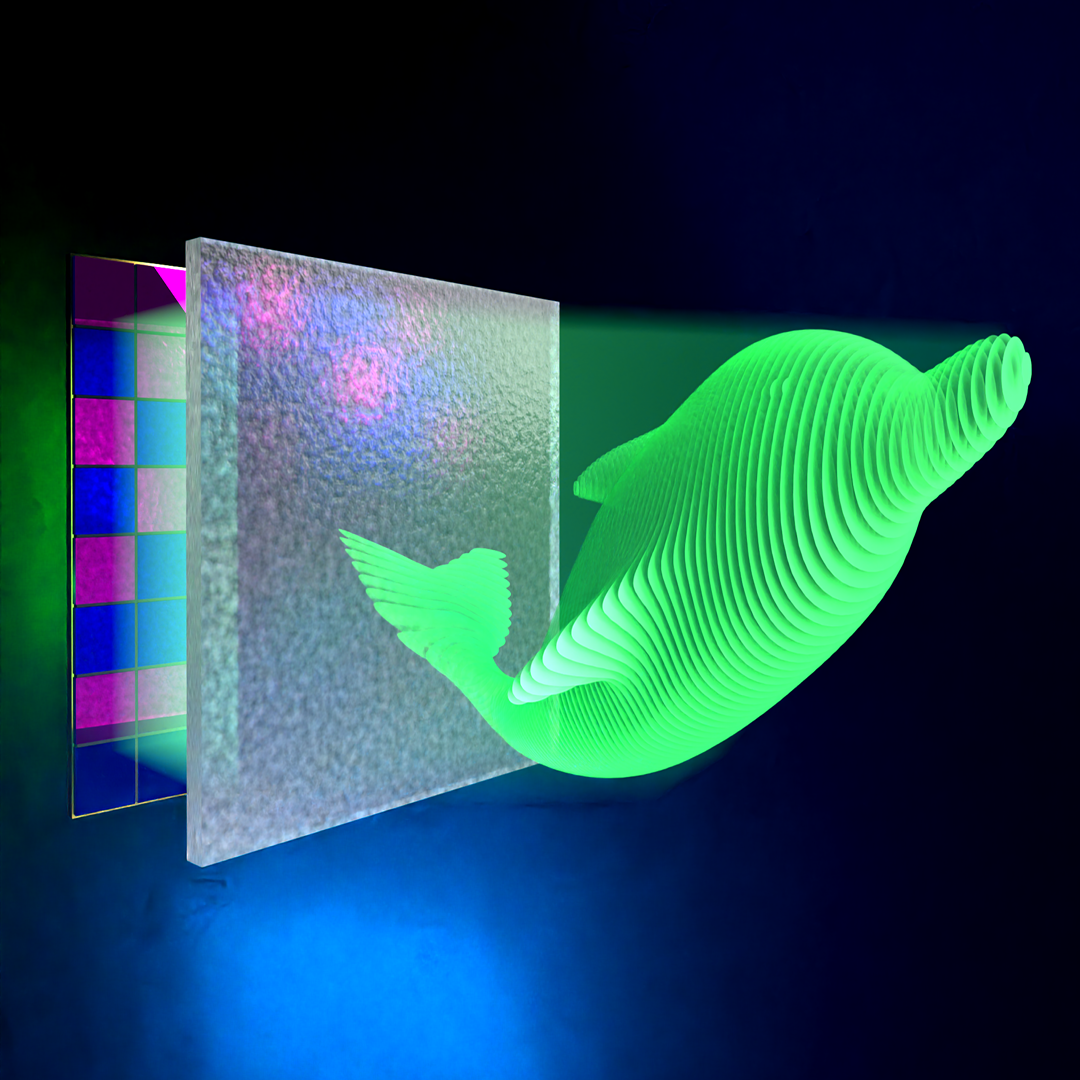A new method to develop dynamic ultrahigh-density 3D holographic projections has been developed by scientists.

Researchers have developed a new way to achieve dynamic projection of 3D objects onto ultrahigh-density successive planes. By packing more details into a 3D image, this approach could enable realistic representations for use in virtual reality and other applications. Image Credit: Lei Gong, University of Science and Technology of China.
By packing added details into a 3D image, this kind of hologram can allow realistic representations of the world for use in virtual reality as well as other applications.
A 3D hologram can present real 3D scenes with continuous and fine features. For virtual reality, our method could be used with headset-based holographic displays to greatly improve the viewing angles, which would enhance the 3D viewing experience. It could also provide better 3D visuals without requiring a headset.
Lei Gong, Leader, Research Team, University of Science and Technology of China
Generating a realistic-looking holographic display of 3D objects needs projecting images consisting of a high pixel resolution onto a huge number of consecutive planes, or layers, that are spaced conjointly. This helps obtain a high-depth resolution, which is significant for offering the depth cues that creates the hologram appear to be three-dimensional.
In Optica, Optica Publishing Group’s journal for high-impact research, Gong’s team and Chengwei Qiu’s research team at the National University of Singapore explain their new method, known as three-dimensional scattering-assisted dynamic holography (3D-SDH). They prove that it has the potential to achieve a depth resolution over three orders of magnitude higher compared to the sophisticated techniques for multiplane holographic projection.
Our new method overcomes two long-existing bottlenecks in current digital holographic techniques — low axial resolution and high interplane crosstalk — that prevent fine depth control of the hologram and thus limit the quality of the 3D display. Our approach could also improve holography-based optical encryption by allowing more data to be encrypted in the hologram.
Lei Gong, Leader, Research Team, University of Science and Technology of China
Producing More Detailed Holograms
Normally, creating a dynamic holographic projection includes making use of a spatial light modulator (SLM) to regulate the intensity and/or phase of a light beam.
But holograms available at present are restricted concerning the quality since the present SLM technology enables just a few low-resolution images to be projected onto separate planes having low-depth resolution.
For this issue to be resolved, the scientists integrated an SLM with a diffuser allowing several image planes to be isolated by a much smaller amount without being constrained by the SLM. Also, by suppressing crosstalk happening between the planes and utilizing scattering of light and wavefront shaping, this setup allows ultrahigh-density 3D holographic projection.
For the new method to be tested, the scientists initially made use of simulations to display that it could produce 3D reconstructions having a much smaller depth interval between every plane.
For instance, they were capable of projecting a 3D rocket model with 125 consecutive image planes at a depth interval of 0.96 mm in a single 1000×1000-pixel hologram, then 32 image planes with a depth interval of 3.75 mm utilizing another recently developed method called random vector-based computer-generated holography.
Experimentally, to validate the concept, the researchers constructed a prototype 3D-SDH projector to make dynamic 3D projections and made a comparison to this conventional advanced setup used for 3D Fresnel computer-generated holography. They displayed that 3D-SDH achieved an enhancement in the axial resolution of more than three orders of magnitude over the traditional counterpart.
The 3D holograms illustrated by the scientists are all point-cloud 3D images, implying they cannot present the 3D object’s solid body. Finally, the scientists would like to be capable to project a group of 3D objects with a hologram, which would need new algorithms and a greater pixel-count hologram.